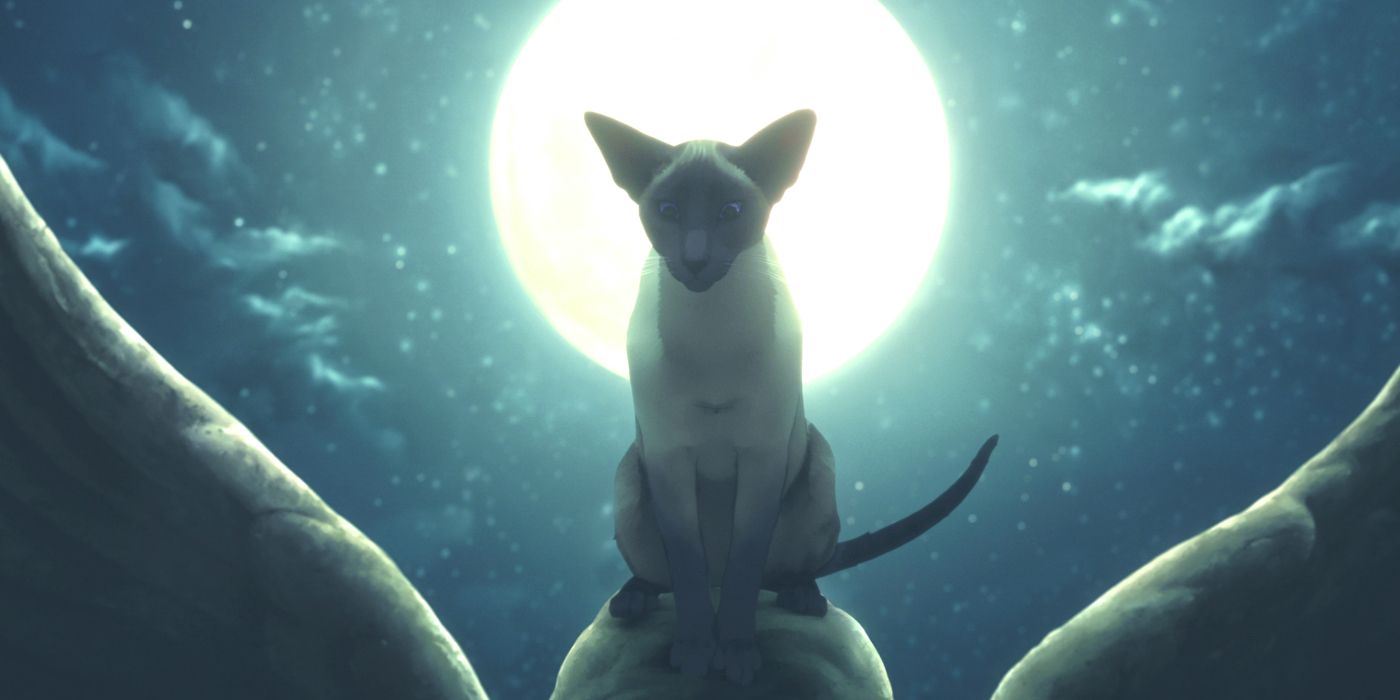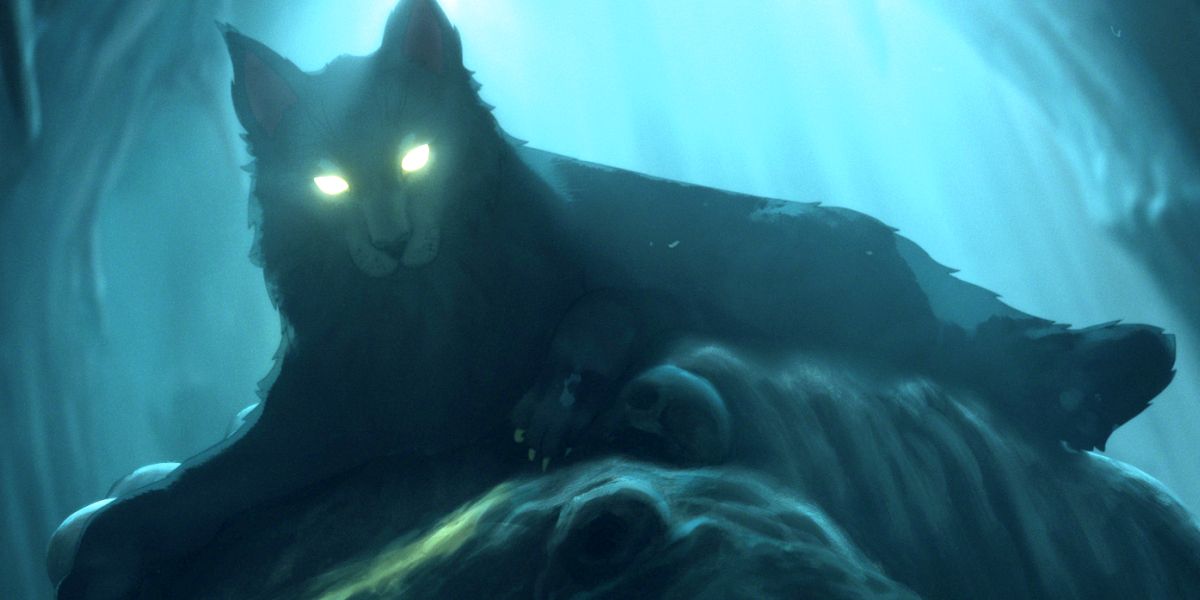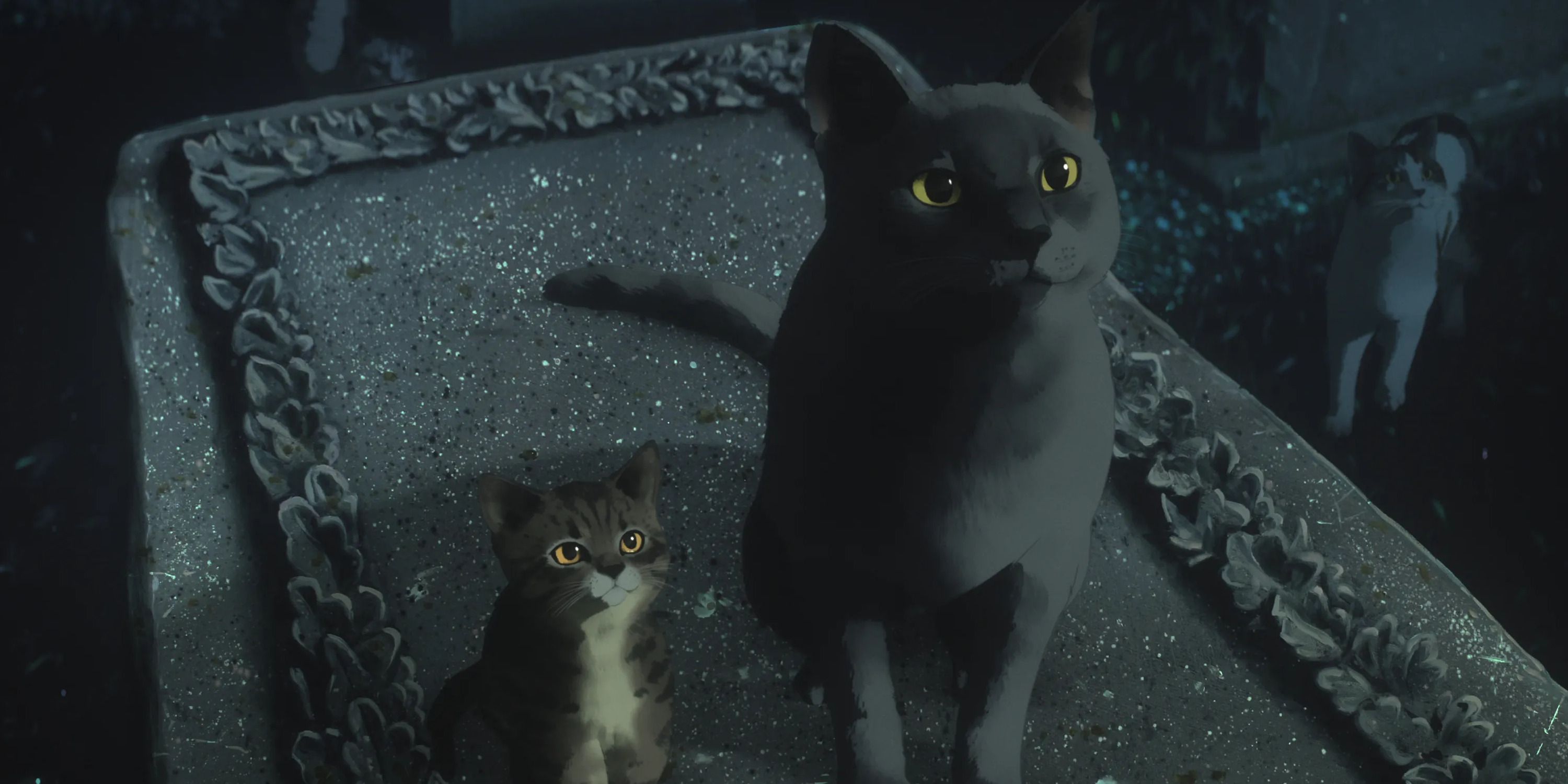After its enormously successful series premiere at the start of August, The Sandman surprised fans by releasing a bonus episode two weeks after its launch. The first story in the episode is "A Tale of a Thousand Cats," adapting the comic book story of the same name by Neil Gaiman and Kelley and Malcolm Jones. Adapted into a hybrid of animation styles by director Hisko Hulsing, the tale follows cats banding together to dream of a day when they can appeal to Morpheus to rule the world.
In an exclusive interview with CBR, Hulsing explained the different techniques he and the production team used to bring "A Dream of a Thousand Cats" to life, revealed the trickier aspects of the production, and shared how production marked his birthday in a decidedly unique way.
CBR: The animation on "A Dream of a Thousand Cats" is gorgeous, with the 3D cats on top of oil-painted backgrounds. How was it compositing the two styles together?
Hisko Hulsing: I directed a show called Undone for Prime Video, and we also used oil painting for the backgrounds, with the characters flat but based on real persons. With "A Dream of a Thousand Cats," we were at a studio called Untold in London that made these beautiful, realistic cats. You cannot just get them into painted backgrounds because they were way too realistic, you'd see all that hair, and it just wouldn't match with the background at all.
What we did was rotoscope all the cats -- they were all being traced, it's like two different kinds of animation. First was the 3D cats. Then it was all being traced and painted, with all shading based on the 3D cats and stylized. You need to simplify and stylize it to make it work with those painted backgrounds because oil paintings are realistic but not as realistic as a photo. That's how we had to bring it together, and with "A Dream of a Thousand Cats," I think it worked out very well and very much looks like one world.
The cat movement is so naturalistic. Did you use any motion-capture or stick entirely to reference material?
No, I did a film about Kurt Cobain called Montage of Heck, and there was one scene that I storyboarded where the camera had to follow cats who jump on a table. That took me two days to film, so I know that cats don't listen. That's what "A Dream of a Thousand Cats" is about. People from Warner Bros. approached Untold Studios. They had worked on the remake of The Lion King, so they were already used to super high-level animation.
My big point, and also from showrunner Allan Heinberg and Neil Gaiman, was that they had to be real cats: no anthropomorphic, human-like behavior. Usually, when animals are animated, they look like animals but behave in a human way. Here, the whole point is that they are cats, and they do communicate telepathically. That was a risk, not to have their lips animated. I was still worried about it until this morning [when the episode premiered]. [laughs] It was such a risky thing to do, to have all those conversations without the lips moving.
My assistant would gather all kinds of reference materials, like a cat jumping on a tree, she would send it to the studio in London, and they would use it as a reference. The acting had to be cat-like, but you couldn't let the audience hear their voices and not have any connection to the cats. They were acting, but like how cats would act with very subtle movements of the head and the tail. The tail is very important. We didn't do any motion-capture. It was all animated, but the animators looked at a lot of reference materials and their own cats. It was always this fine line, that it should look like a cat and that it should also look as if it was communicating. That is a hard thing, and I think we got it right.
One of the wildest sequences in the episode is the prehistoric world ruled by gigantic cats, with humans petting and being hunted by them.
I went to London, and there were two camera crews working simultaneously on The Sandman on these huge film sets. In "A Dream of a Thousand Cats," all the humans are rotoscoped. So we did film them on one of those sound stages with a huge crew that was like a well-oiled machine because they had already done ten episodes of The Sandman. That was the great thing. It took us three days to film the human beings.
I had the weirdest 50th birthday ever because I had told nobody that it was my birthday, and I had to direct 30 naked people who were acting like they were combing cats. Somebody told them it was my birthday so suddenly all those people, including the naked people, started singing "Happy Birthday" to me. It was great. [laughs] It was a Barbarella kind of vibe, with naked girls and guys stroking fur on huge boxes. Before we did the live-action, we designed everything in 2D and 3D, so all the measurements had to be correct. If they act like they're on cats, they should be as high as that, with the cat being animated later.
Between the mix of animation styles and live-action, what was the most technically involved aspect of bringing "A Dream of a Thousand Cats" to life?
Because there was Untold Studios in London, who did very good work, and the studio here in Amsterdam where the rest of it was done, with storyboards and all that. Communication between the studios was a bit hard because it was so technical, with moving previsualization. Also, the situation during the pandemic was hard, and I was directing Undone at the same time and doing the production design. [laughs] That was kind of hard for me personally.
How was it having Kelly and Malcolm Jones' artwork in the comic to go off of?
When I read the comic, I read it twice and really loved it but sensed right away that it wasn't suited for film the way that it was told. A comic is just a really different way of storytelling. You can get away with more that, in film, would be more confusing. I read it, loved it, then I got a script from Allan Heinberg that was very close to the comic but compressed, and I started off from there. I went through the script on the right side and, on the left side, drew my thumbnails doing it completely from imagination.
In my comic, I had notes from Neil Gaiman to Kelley Jones and went all from the script, because I have my own style of directing, but I did read all of Neil's comments. I was truthful to them, some I didn't think would lead to the best results [for television], and I think, a lot of people think it's really truthful to the comic because I did see it. [laughs]
Developed for television by Neil Gaiman, David S. Goyer, and Allan Heinberg, The Sandman is available to stream on Netflix.



